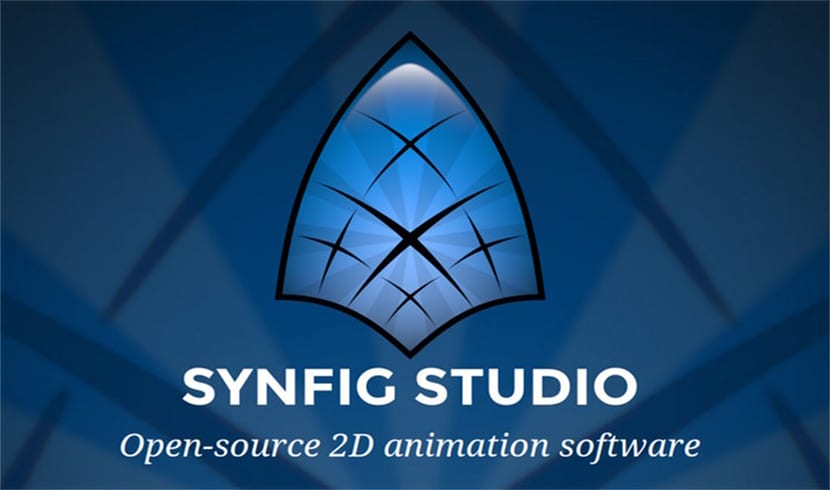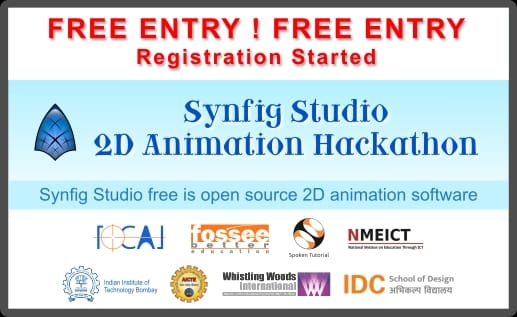| Original author(s) | Robert Quattlebaum |
|---|---|
| Stable release | |
| Repository | |
| Written in | C++ (using gtkmm) |
| Operating system | Linux, Mac OS X, Windows |
| Type | Vector graphics editor, computer animation |
| License | GPL |
| Website | synfig.org |
'Synfig Studio' is an open-source 2D vector animation software. It is designed to produce film-quality animation with less people and resources. Synfig Studio is built to eliminate the need to draw each frame individually. There are two techniques for that. Nov 14, 2020 Synfig is a powerful, industrial-strength vector-based 2D animation software package, designed from the ground-up for producing feature-film quality 2D animation with fewer people and resources. Synfig is a powerful, industrial-strength vector-based 2D animation software package, designed from the ground-up for producing feature-film quality animation with fewer people and resources. While there are many other programs currently on the market to aid with the efficient production of 2D animation, we are currently unaware of any other. Making a crosshair in Synfig is easy. Draw the outlines of a square and align them with the circle. Draw an X using the corners of the square as a reference. Delete the square. Group the circle and the X. Rotate 45 degrees using the Group Transformation Widget. Two-dimensional or 2D animation is characterized by having its objects and characters created in the two-dimensional space. It means that they only have width and height.
Synfig Studio (also known as Synfig) is a free and open-sourcevector-based 2Danimation software.[1] It is created by Robert Quattlebaum[2] with additional contributions by Adrian Bentley.
Synfig began as the custom animation platform for Voria Studios (now defunct[3]), and in 2005 was released as free/open source software, under the GNU General Public License.[4]
Features[edit]
As a true front-end and back-end application, it is possible to design the animation in the front-end, Synfig Studio, and to render it at a later time with the backend, Synfig Tool, on another (potentially faster) computer without a graphical display connected. Incremental and parallel rendering with Synfig Tool is supported by some open source render farm management software, such as RenderChan.
The goal of the developers is to create a program that is capable of producing 'feature-film quality animation with fewer people and resources.'[5] The program offers an alternative to manual tweening so that the animator does not have to draw each and every frame.[6]

The software is capable of simulating soft-shading using curved gradients within an area so that the animator doesn't have to draw shading into every single frame. There is also a wide variety of other real-time effects that can be applied to layers or groups of layers like radial blurs, color tweaks that all are resolution-independent. Other features include the ability to control and animate the width of lines at their individual control points, and the ability to link any related data from one object to another. Synfig also works with High Dynamic Range Imaging.
File formats[edit]

Synfig stores its animations in its own XML file format, often compressed with gzip. These files use the filename extension .sif (uncompressed), .sifz (compressed) or .sfg (zip container format). The files store vector graphics data, embed or reference external bitmap images, and also a revision history of the project.
Synfig 2d Animation Tutorial
Synfig can render to video formats such as AVI, Theora and MPEG, as well as animated graphics formats such as MNG and GIF. It can also render to a sequence of numbered image files, using formats such as PNG, BMP, PPM and OpenEXR.
From version 0.62.00, Synfig has basic support for SVG import.[7]
From version 0.91 Inkscape can save as .sif file format.
Uses[edit]
Since May 2008, a group of Russian volunteers have been trying to make an animation movie project called the Morevna Project using Synfig, based on the folk-tale of Marya Morevna re-invented as a science fictionanime. They have been making regular updates since then on the Morevna project site, including a demo video released on November 10, 2012.[8]Free Software Magazine contained an article on the project.[9][needs update]
Name[edit]
It was originally called SINFG, a recursive acronym for 'SINFG Is Not A Fractal Generator', referring to the software's capability of generating fractal imagery in addition to animation.[10]
See also[edit]
References[edit]
- ^'Overview - Synfig Animation Studio'. wiki.synfig.org. Retrieved 2020-09-18.
- ^'Interview with Synfig's Robert Quattlebaum'.
- ^'Voria Studios Closing Letter'.
- ^'Synfig Open-Source Announcement'.
- ^'Synfig Studio :: Home'.
- ^Bowen, Ronda (13 March 2011). 'Top 5 Low-Budget and Free Flash Editors'. Brighthub.com. Bright Hub Inc. Retrieved 7 February 2015.
- ^'Synfig 0.62.00 Release'. Archived from the original on 2010-05-25.
- ^'Morevnaproject.org'.
- ^'The Morevna Project: Anime with Synfig and Blender'. Archived from the original on 2011-08-14.
- ^'Synfig Studio :: History'.
External links[edit]
- Official website
Motion graphics and animation software | ||||
|---|---|---|---|---|
| 2D | 3D | Mix | ||
| Free and open-source | ||||
| Closed-source | Freeware |
| ||
| Commercial | ||||
| Discontinued / Legacy | ||||
| Language: | English • čeština • Deutsch • español • suomi • français • Bahasa Indonesia • italiano • 日本語 • Nederlands • polski • português • română • русский • српски / srpski • 中文(中国大陆) |
As you probably know, animation is the rapid display of a sequence of images in order to create an illusion of movement. Traditionally 2D animation is created by drawing each displayed image individually. Those images are called 'frames' and thus such method is called 'frame-by-frame animation'. To create a good illusion of movement you need to draw many frames, that's why this method requires a lot of time and resources.
'Synfig Studio' is an open-source 2D vector animation software. It is designed to produce film-quality animation with less people and resources.
Synfig Studio is built to eliminate the need to draw each frame individually. There are two techniques for that:
- Morphing animation
- Cutout animation

Morphing
Synfig 2d Animation Software
Morphing is a technique that takes two images and creates a smooth transition between them. In the process of morphing, one shape is deformed into another and this transformation is usually defined by control points.In Synfig Studio images are constructed from vector shapes and the morphing is done automatically. This allows us to create animations by drawing only the key positions at relatively wide time intervals. You need only to draw a few frames as needed to create a basic sense of motion for the scene, and Synfig Studio will create the in-between frames.
Cutout animation
Cutout animation is created by splitting objects into parts and applying some simple transformations to them (like translation, rotation or scale) at different moments of time.
Synfig Studio uses those values to interpolate the motion for in-between frames. Cutout animation can be produced from bitmap images or vector graphics.
Synthesis and other functionalities
In both cases the role of Synfig Studio is to fill the gaps between the drawn frames (also called 'keyframes') and produce smooth and fluid animations. This process is called 'tweening'.
Although Synfig Studio is not directly intended to draw animation frame-by-frame, it can be used to bring your hand-drawn frame-by-frame animation to the film-quality level by converting bitmap data of each frame into vector format. This process is called 'tracing' and usually done by hand by constructing vector shapes on top of bitmap images. In the process of construction you can apply a lot of fascinating effects built into Synfig Studio to achieve a professional look for your animations.
Whether you do frame-by frame animation or not, Synfig Studio gives you flexible control over the repeated data, such as colors, outline characteristics, textures, images and many more, even animation trajectories and their sets (actions). Reusing repeated data is achieved via linking. This is a power of Synfig Studio, which is especially important for big animation projects.
Among the plain linking pieces of artwork data you can also define relations between them using a set of functions. That allows to create automatic animation based on the defined laws and bring whole animation process to the next level.
All those features of Synfig Studio are covered in detail in the chapters of this manual.
Pencil 2d Animation Software

| Navigation: | Manual • >> |
| Language: | English • čeština • Deutsch • español • suomi • français • Bahasa Indonesia • italiano • 日本語 • Nederlands • polski • português • română • русский • српски / srpski • 中文(中国大陆) |
